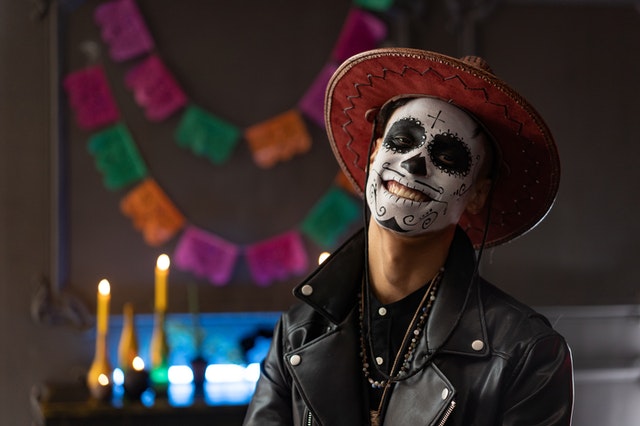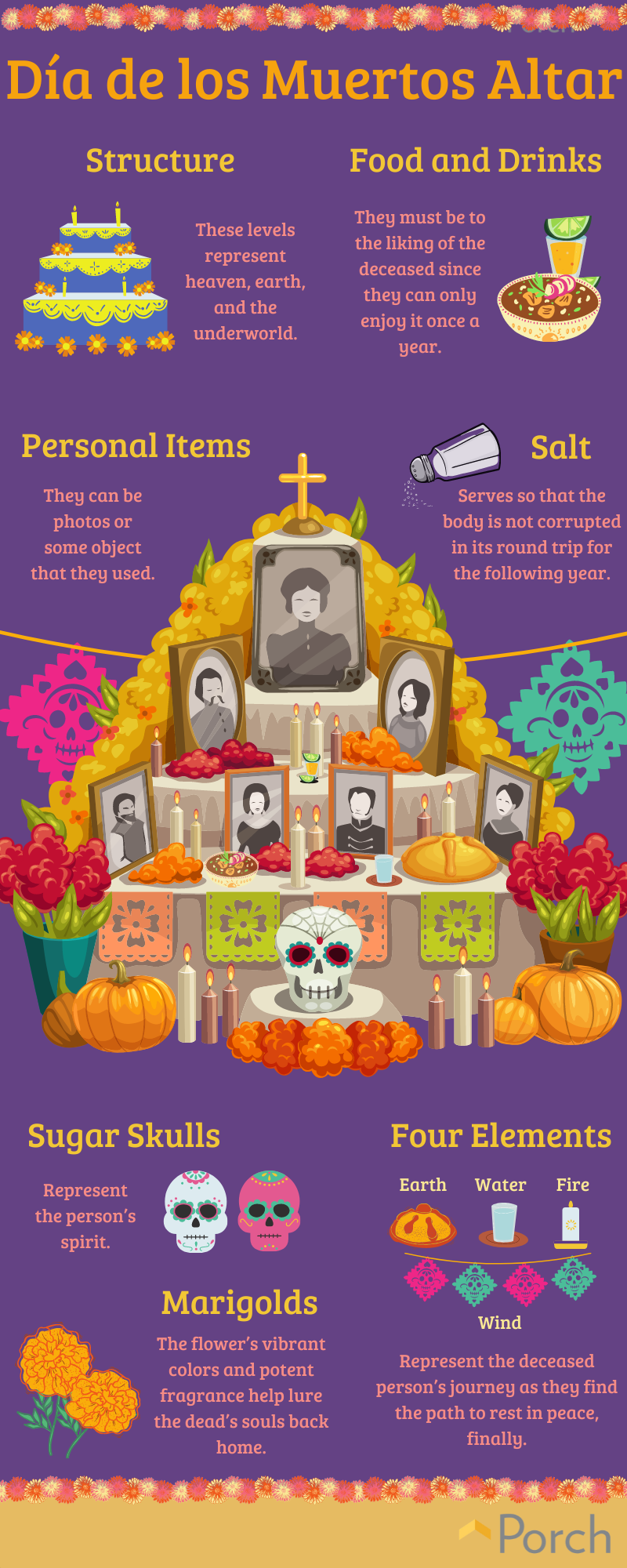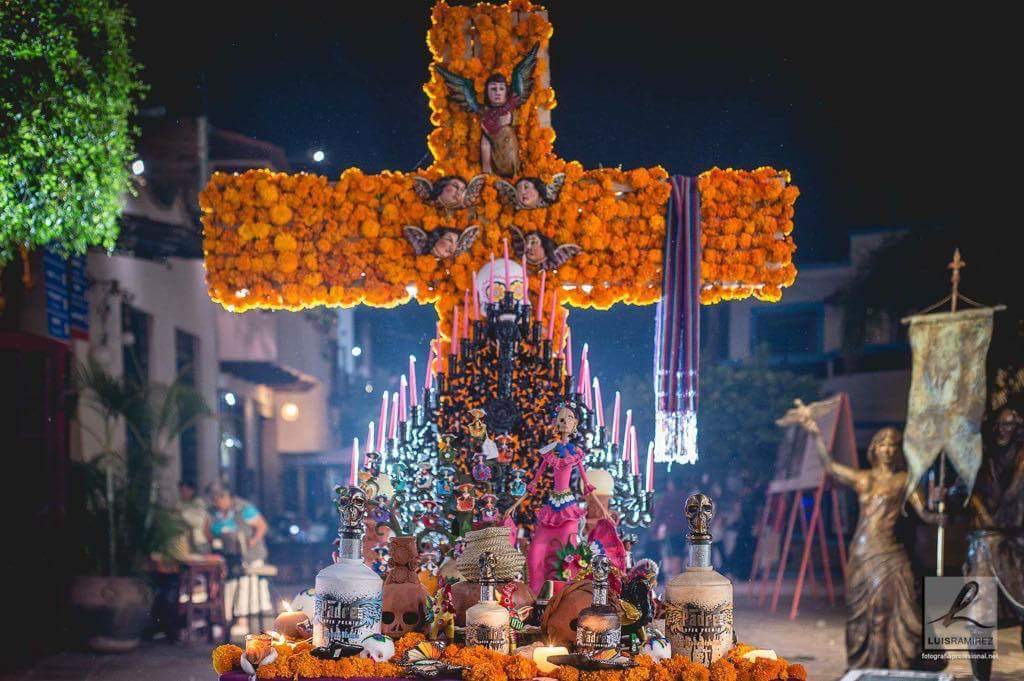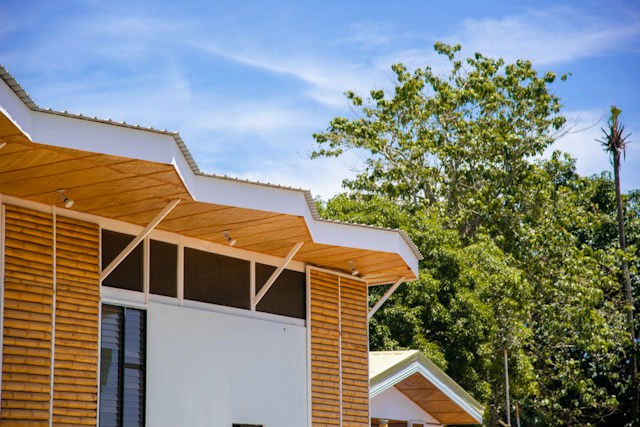Day of the Dead, or Día de los Muertos, is a Mexican holiday celebrated on November 1st and 2nd. It is observed throughout Latin America and the United States as a way to honor dead loved ones by making peace with their passing. The origins of the holiday come from the rituals of the pre-Hispanic peoples of Mexico. Originally, the Day of the Dead was celebrated for a month, but when the Spanish arrived in Mexico, it was moved to coincide with All Saint’s Day and All Souls’ Day. This legendary holiday is celebrated in many ways, depending on the region. Many people decorate graves with marigolds, candles, and some of the favorite food of their deceased relatives. Others enjoy celebrating with food, alcohol, and skull masks or sugar skulls called calacas. Altars or ofrendas are often built inside peoples’ homes and adorned with flowers, food, candles, and photos of their loved ones. It’s estimated that approximately 28-percent of the American population celebrates Día de los Muertos, with the percentages much higher in Mexico.
The unique history of Mexico’s Day of the Dead

Día de los Muertos can be traced back as far as the Aztecs, who used skulls to honor and celebrate the dead for centuries before the Spanish conquered their empire in the 16th century. As the celebrations became more widespread, the holiday was celebrated through a variety of cultural traditions.
Altars: People build altars called ofrendas in their homes, which honor the souls of the departed. The altars typically include candles, photos of the deceased, and some items they may leave behind. Offerings are given, including food, tequila or their favorite alcoholic drink, and flowers like marigolds. It’s said that the strong fragrance of the colorful flower will lead their soul home.
Grave visitation: The families clean the graves at the cemetery to prepare for the spirit’s arrival. On November 2nd, they visit the grave and bring food to the cemetery to attract the spirits. A community celebration occurs, and bands play as people dance to perform for their loved ones’ souls.
La Catrina: This legendary skeleton became the face of Day of the Dead celebrations after artist Jose Guadalupe Posada portrayed her in a 1910 etching to represent Mexico’s elite. She wears a large hat, fancy jewelry, and in 1947, famous artist Diego Rivera depicted her on a mural in a full-length gown.
Why the holiday is important to Mexicans
This unique holiday is an extremely meaningful part of Mexican culture. It serves as a way to honor those who have passed on by allowing people to communicate with their loved ones after they go on to the next realm. It is not meant as a time of mourning but more as a celebration to pay honor and respect to the life of those who are lost. During the two days, Mexicans eat food, drink, and celebrate with dancing, music, and extravagant costumes. It’s a way to celebrate life and death together in a meaningful way that honors those who have lost their lives. It’s believed that during the celebration, families have permission to communicate with the dead and visit those they love while they celebrate together.
The traditional Día de los Muertos altar and its meaning
Perhaps the most important of Día de los Muertos traditions is the building of the altar. This important part of the holiday incorporates most of the elements of the festivities, which makes it one of the most impactful and essential traditions of the Day of the Dead holiday. Some items that are included in a Day of the Dead altar are:
The four elements: Ofrendas include the four elements of water, wind, earth, and fire. These elements represent the deceased person’s journey as they find the path to rest in peace finally. Water is left in a pitcher to give the spirits something to quench their thirst. Colorful paper banners or “papel picado” are hung across the altar to represent the wind. The earth is represented by food, including bread and homemade meals. Many candles are placed at the altar in the form of a cross to provide the fire element and help the spirits find their way home.
Structure: Most Day of the Dead altars consist of one to three levels, with three most common. These levels represent heaven, earth, and the underworld. More elaborate altars may include up to seven levels. The altar may be covered with a white tablecloth, preferably one passed down from family members. You may also adorn the altar with a colorful tablecloth if you choose. Some Mexicans also sprinkle salt on the altar to protect the body from breaking down as it travels between the realm of the dead and the world of the living.
Personal items: Framed photos of the deceased loved one are commonly placed on the altar. Some of the person’s belongings can also be included so that they have items they recognize when they return for their brief visit.
Sugar skulls: These colorful treats are made by hand and can include the person’s name inscribed on the forehead. These sugar skulls or calaveras are added to the altar to represent the person’s spirit. Calaveras are also placed on the loved one’s grave to serve as an offering to honor their spirit. Some sugar skulls are made of clay and painted in bright colors.
Marigolds: These beautiful, brightly colored cempasúchil flowers adorn altars and graves and are also worn on costumes and in women’s hair. It’s said that the flower’s vibrant colors and potent fragrance help lure the dead’s souls back home.
How to celebrate Día de los Muertos at home
If you’d like to practice some of these Mexican traditions at home, here are some ways to celebrate:
Build an altar: You can build your own ofrenda or altar on a table or a cabinet with multiple shelves. Be sure to incorporate all of the elements, including the water, fire, earth, and wind elements. A pitcher of water, your loved one’s favorite food, framed pictures, and several candles are appropriate to add. You may also place some of their most treasured belongings on the altar. Be sure to adorn the ofrenda with a colorful paper banner, too.
DIY papel picado: Make your own banner or papel picado with colorful tissue or lightweight table covers. Vibrant colors of blue, yellow, pink, green, and red are best. Trace several different sugar skull designs on the paper, then cut them out using scissors or a sharp knife. Be sure to cut out holes for the eyes, nose, and mouth and cut out a few shapes around the skull to give it a decorative touch. You may also use rectangles and cut out flowers and other shapes. String each piece of tissue paper together using a lightweight rope or some string, then drape your papel picado across the altar. You can also display the banners above a doorway or hang them on a wall.
Catrina/sugar skull face painting and costume-wearing: You may paint your face to represent La Catrina using red, white, and black. The red represents the love for departed friends and family members. Black and white resemble mortality and the spirits of those who passed. Your face should have a white base, with black painted around the eyes and mouth. Red floral designs are then painted around the forehead, cheeks, and chin. You may also add more vibrant colors if you desire. A long, floral dress or gown is often worn by women, as well as elaborate floral headdresses or hair jewelry. Men typically wear black suits and a large black hat adorned with marigolds, roses, and other flowers.
Dress the Catrina/Make a Catrina paper doll: If you have a skeleton figurine, dress it in the style of Catrina using small flowers and bright colors. You can also make a DIY Catrina paper doll using a small paper tube as the body and a lollipop for the head. Cover the doll with colorful tissue, paying close attention to her gown and face. Draw her face on paper, color it with markers, then attach it using craft glue. Take strips of colorful tissue and wrap them around her to design a beautiful Día de los Muertos gown.
Gather with the family to eat: Día de los Muertos is a celebration centered around food, music, and dancing. Spend time together as a family eating traditional food and candy and sip on a cup of delicious Mexican hot chocolate. Bake some pan de muerto or “Bread of the Dead.” This traditional Mexican bread is easy to make, and it can be shaped into animal, flower, or skull designs if you choose. Other traditional dishes include candied pumpkin (calabaza en tacha), corn tamales, pozole, and mole.
Write literary Calaveras: Literary Calaveras are lighthearted epitaphs that are written to honor the dead. You can also write some to honor a few people you love that are still alive. When writing your Calavera, think of things about the person that are humorous or specific things about them that makes them unique. The lines don’t have to rhyme, but they are often written as a multi-lined poem with rhyming verses. Once you write it, decorate the borders with colorful sugar skulls, flowers, or other Day of the Dead designs. Use colorful markers or colored pencils on a large sheet of white construction paper to make it. You can hang the literary Calaveras on your altar or give them to a loved one as a gift.
DIY Day of the Dead Wreath: Create an inexpensive and beautiful Day of the Dead Wreath with items that cost less than $1 each! This DIY can be done with your whole family and takes between 90 minutes and an hour. The finished product is gorgeous and can be placed on your doors or any window!
Remember that Dia de los Muertos is a beautiful, festive holiday that demonstrates Mexicans’ deep understanding of death and life after death. Consider trying some or all of these traditional activities mentioned, either alone or with your family. Celebrating Day of the Dead is a wonderful reminder that life does not end once we die, but rather, the love and life that we live go on through those we’ve left behind until we meet again.






